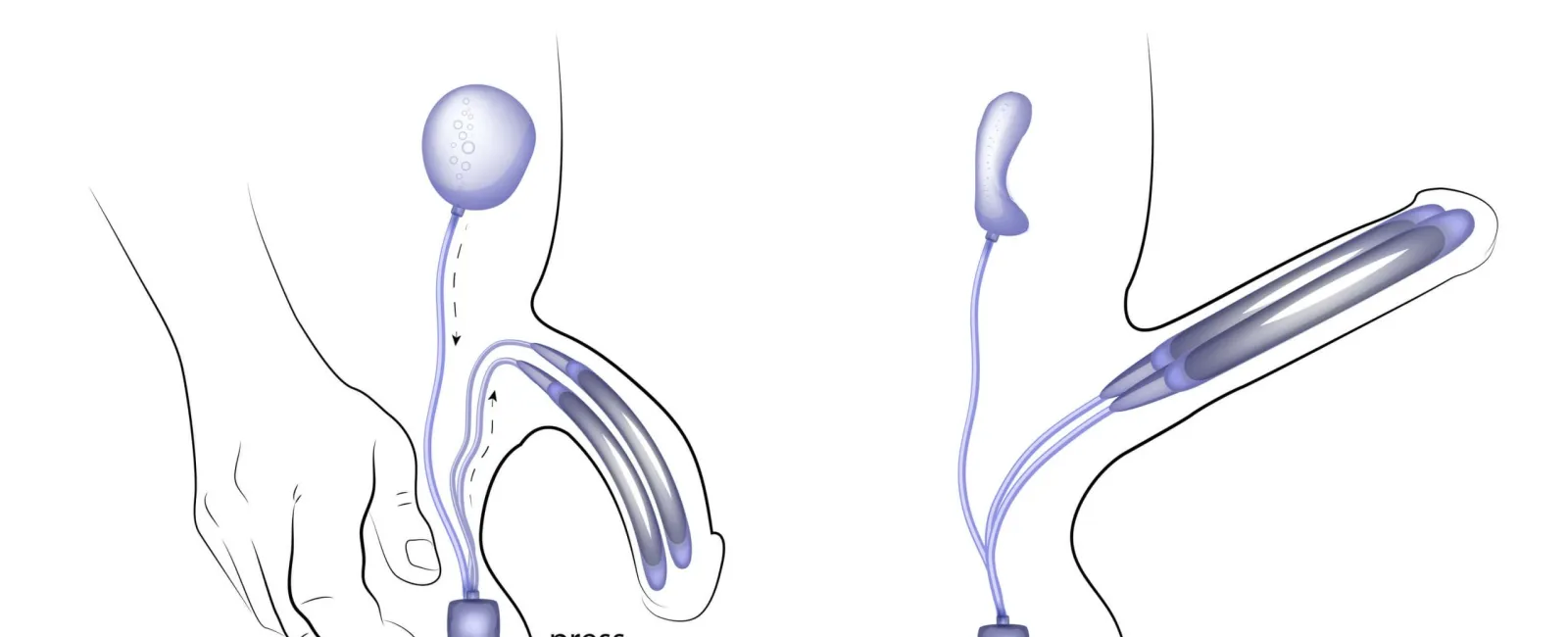In cases where male patients are suffering from chronic erectile dysfunction that hasn’t responded to other forms of treatment, doctors may recommend an intervention known as a penile implant. This minor surgical procedure can offer a safe and effective method of restoring the proper sexual function of the penis, allowing men to resume healthy sexual activity.
While penile implant surgery may seem like an extreme and potentially uncomfortable measure, it can offer dramatic benefits to individuals suffering from chronic ED and the mental, physical, and interpersonal consequences that can come with this condition. Read on to learn more about the use of penile implants, including how they are used, and how you can safely operate them on your own.
What is a Penile Implant?
A penile implant is a prosthetic device inserted into a penis to manually facilitate an erection of the penis. This device gives men control over their penis to give themselves an erection to facilitate sexual experiences, in effect restoring the use of the penis as a sex organ.
Once surgically installed, penile implants can be manually operated by the man to let them have an erection whenever he wants.
How Does a Penile Implant Work?
There are two penile implants types men may choose from when deciding to get a penile implant:
Inflatable implants. These are the most common type of penile implants. They use a fluid-filled reservoir to expand or contract silicone cylinders in the penis, mimicking the flow of blood to restore proper functioning to the penis. Users can inflate and deflate the penis by moving fluid between the rods in the penis and a reservoir implanted in the abdominal wall, or in the scrotum.
Semi-rigid implants. This penile implant features a rod that is always somewhat rigid, which will mean the penis is never fully flaccid even when the individual is not seeking an erection. Users conceal a penis equipped with a semi-rigid implant by positioning it against the body when not in use.
How is a Penile Implant Done?
Insertion of a penile implant is a surgical process performed by a doctor. This procedure will involve the implantation of rods in the penis and, in the case of inflatable implants, an installation of a reservoir and pump as well.
Surveys of men receiving penile implants found that the surgeries themselves are between 90 and 95 percent effective, with 80 to 90 percent of men reporting satisfaction with the results.
Possible Disadvantages of a Penile Implant
While a penile implant may be exactly the solution you need for chronic erectile dysfunction, you also need to be aware of the possible drawbacks and complications that can come with this procedure, as well as possible drawbacks of having an implant to facilitate sexual arousal. These potential disadvantages include:
Because the penis is filled with veins and arteries, the risk of bleeding post-surgery is high—and this bleeding may require an additional procedure to suture up the remaining openings.
As with any surgery, penile implants carry a risk of infection. The involvement of a prosthesis, though, may increase this risk, which would then require additional treatments and medication.
While the vast majority of surgeries are successful, it is possible that attempted implantation will not work, resulting in scars from surgery but no benefits.
If the pump and reservoir experience mechanical failures over time, another procedure will be required to fix this problem.
Over its lifespan, any penile implant is at risk of wearing down. Silicone rods in the penis may erode over time, and any of the components of the implant could shift their location in your body, potentially causing health complications and requiring corrective surgery.
Unfortunately, a small percentage of men are ultimately unhappy with the results of their penile implantation. Because there’s no way to test out this intervention before undergoing the procedure, it’s impossible to know for certain whether you will be ultimately satisfied with the end result.
How to Inflate a Penile Implant
If you have an inflatable penile implant, you can move fluid from the reservoir into the penis using a pump that is typically located inside your scrotum. The design of this pump resembles a testicle but will be clearly distinguishable from an actual body part. As you squeeze this pump, fluid will enter the penis and the penis will become erect.
How to Deflate a Penile Implant
Most inflatable implants are equipped with a deflation valve that traps fluid in the penis and keeps it erect as long as the user chooses. When ready to release your erection, though, you can deflate it easily by squeezing the deflation block to open a passageway for fluid to move from your penis into the reservoir. You will find this valve at the base of the penis.
If you’re ready to find a lasting solution to your erectile dysfunction, contact a local urologist office today for a consultation.

